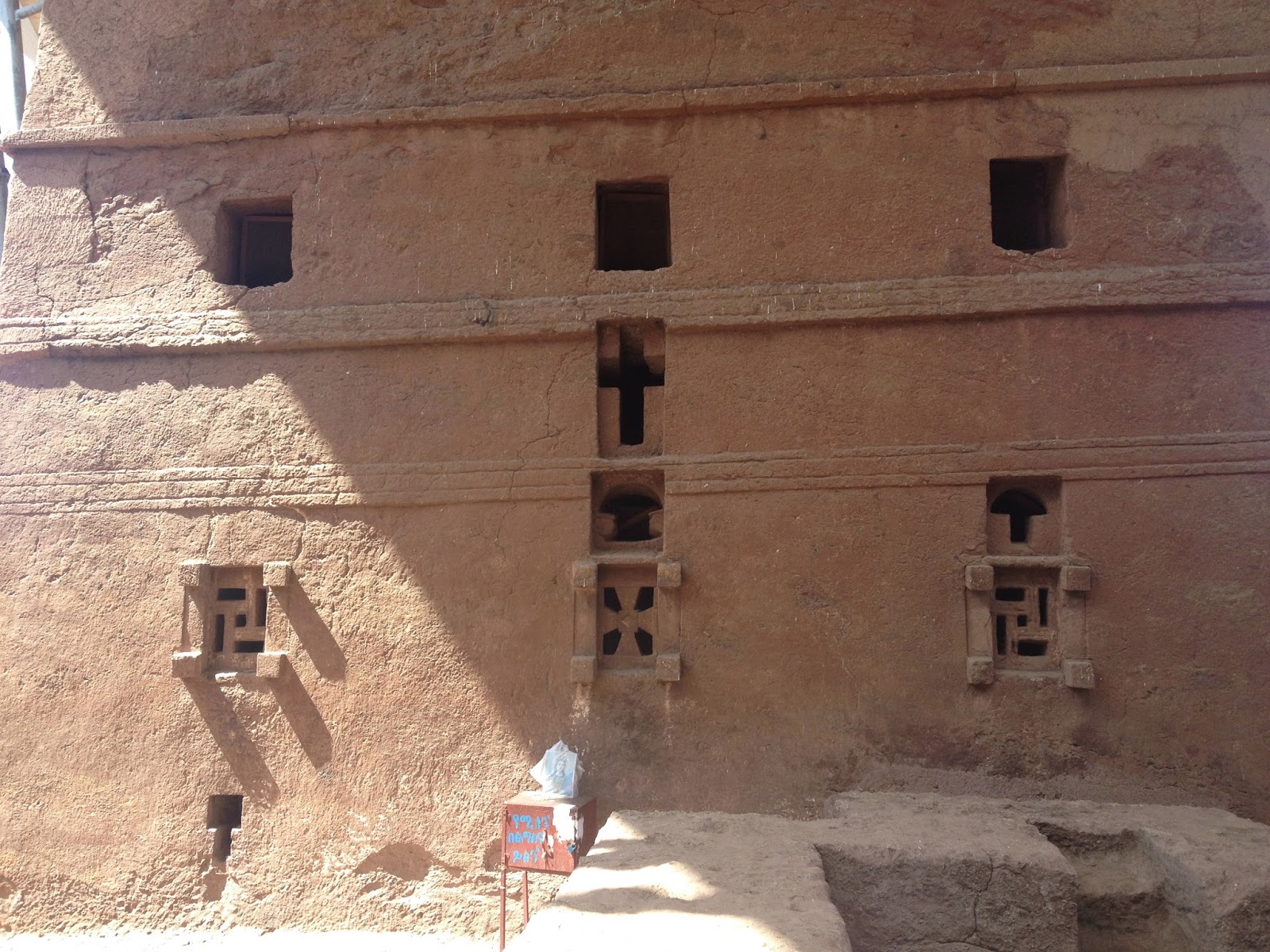There were two major Ethiopian holidays that were celebrated
during the month of January. These
two holidays are Gena and Timkat.
Both are major holidays that include celebrating, spending time with
family and friends, and eating lots of food. In this post I will talk a little about what each of these
holidays celebrates and how I spent them.
Gena is the Amharic name for Christmas. In Ethiopia, Christmas is celebrated on
January 7th. The
difference in date chosen to celebrate Christmas in this country is in part due
to the Orthodox Christian religion as well as the Ethiopian calendar (which is
13 months, rather than 12).
Despite the difference in date, the meaning behind Christmas and the
reason to celebrate is essentially the same.
In America, many people celebrate Christmas, even if they
are not Christian per say. In
Ethiopia, almost all people are fairly if not very religious. Most people in Ethiopia are Christian
Orthodox, Protestant, or Muslim.
There are some who are also Catholic. All listed above with the exception of Muslims celebrate
Gena. As per Ethiopian tradition
when it comes to celebrating a holiday, the may be some sort of service to
attend, family and friends will gather, and there will be a lot of food to eat.
I spent Gena in my town. I was invited to the come to the house of one of the women
who works for one of the NGOs I work with and who is also in the current
English class that I teach. My
sitemate Ashley also came along.
We spent time with the woman who invited us over along with her mother,
sister, and a couple family friends.
We ate some traditional food often eaten on holidays and drank buna
(coffee) and tela (an Ethiopian version of beer).
Later in the day, my landlady invited me over for some
food. It turns out that it was her
son Bobby’s birthday as well! He
turned six. With that being said,
there was also some cake involved.
Despite Ethiopian cake being drier and not quite as sweet as cake in the
states, it was still good.
It was a very cool experience celebrating Christmas twice
this year. I was lucky enough to celebrate
Christmas in December with some great people and then was able to experience
Ethiopian Christmas. It was a
great way to celebrate my first Christmas in another country and away from my
family.
 |
| Buna (coffee) ceremony |
 |
| Traditional Ethiopian Christmas Tree :) |
 |
| Christmas tree made of beer bottles. I thought it was really creative! |
Now it’s time to talk a little about Timkat! Timkat celebrates two different
things. The first is celebrating
the baptism of Jesus and the second is to celebrate the coming of the covenant
of the ark. It is a very unique
holiday specific to Ethiopia and I was lucky enough to experience it with my
parents because it happened to fall during the first week that they were here
visiting. Timkat actually spans
over three days, January 18th through the 20th.
The 18th is the eve of Timkat. On this day, there is a parade of
people that converge and take the ark from the church to a designated place
where it will spend the night. On
the 19th, there is an early morning service celebrating the baptism
of Jesus. There is commonly a pool
of water that is blessed by priests as holy water. At the end of the service, many people rush to the pool of
water. In certain places, the pool
is very large and people will actually jump in and swim for a while. Each church has its own replica of the
ark and in the afternoon, there are parades of people that will travel with
many of these arks back to their designated churches. On the third day of Timkat (the 20th), there are
more festivals as the few last arks travel back to the churches.
I spent much of Timkat in a town called Lalibela. Lalibela is a smaller town, but they
did not fail in really celebrating the holiday. It was a really amazing place to experience Timkat. It is a very cool holiday to experience
and if you are ever in Ethiopia during this time of the year, I would highly
recommend experiencing the celebrations in Lalibela or Gondar. That is a summary of what Gena and
Timkat celebrate and how I celebrated.
If you have any questions about Gena, Timkat, or any other holidays,
feel free to ask!
 |
| Parade of People with the Covenant of the Ark |
 |
| Blessing of the Water |

























